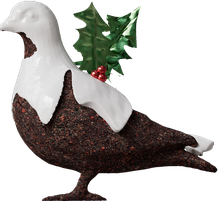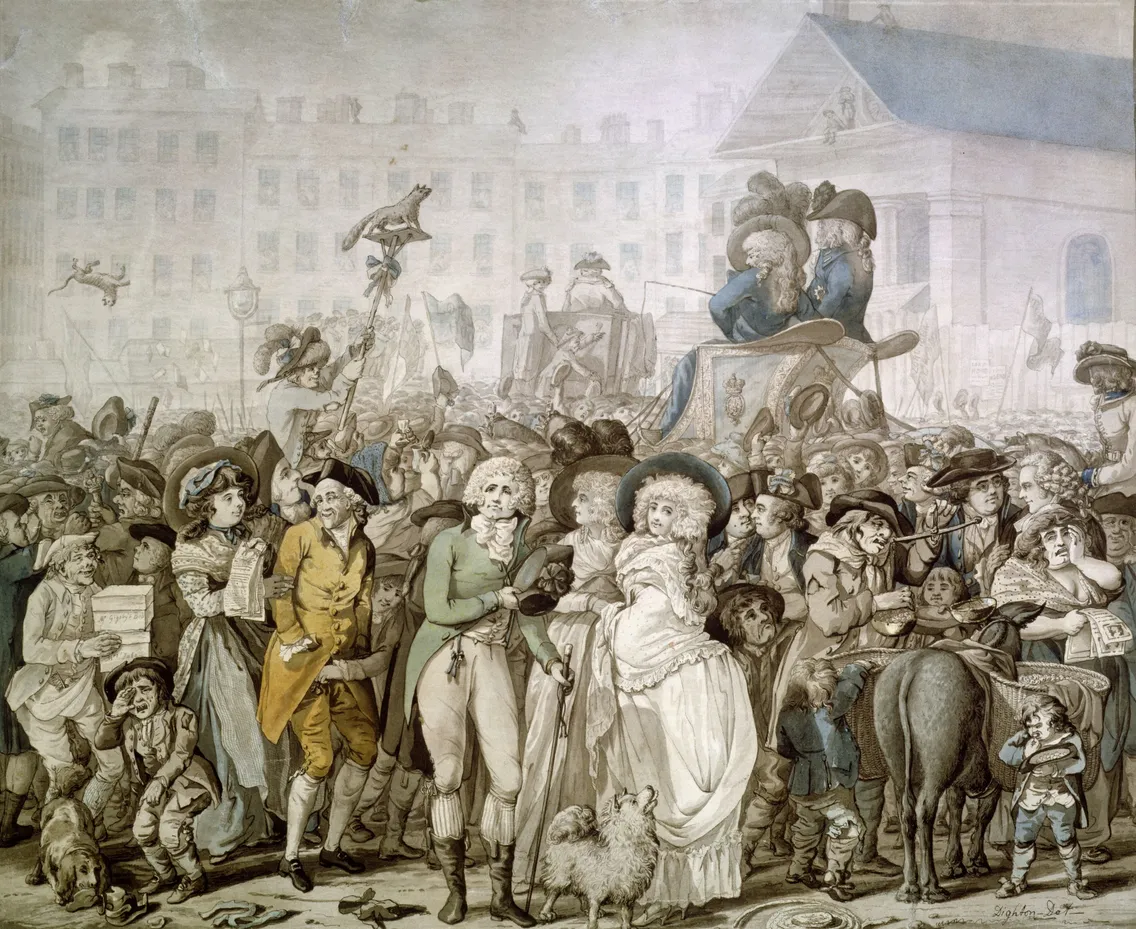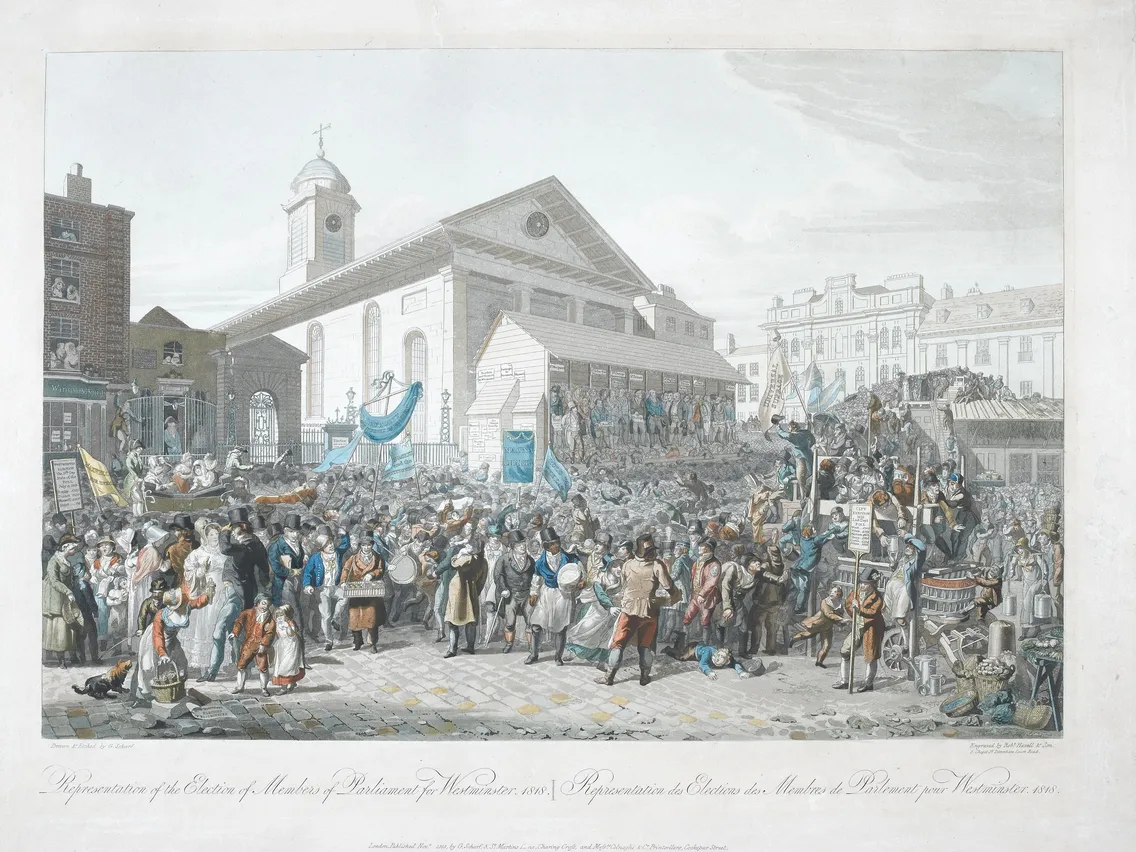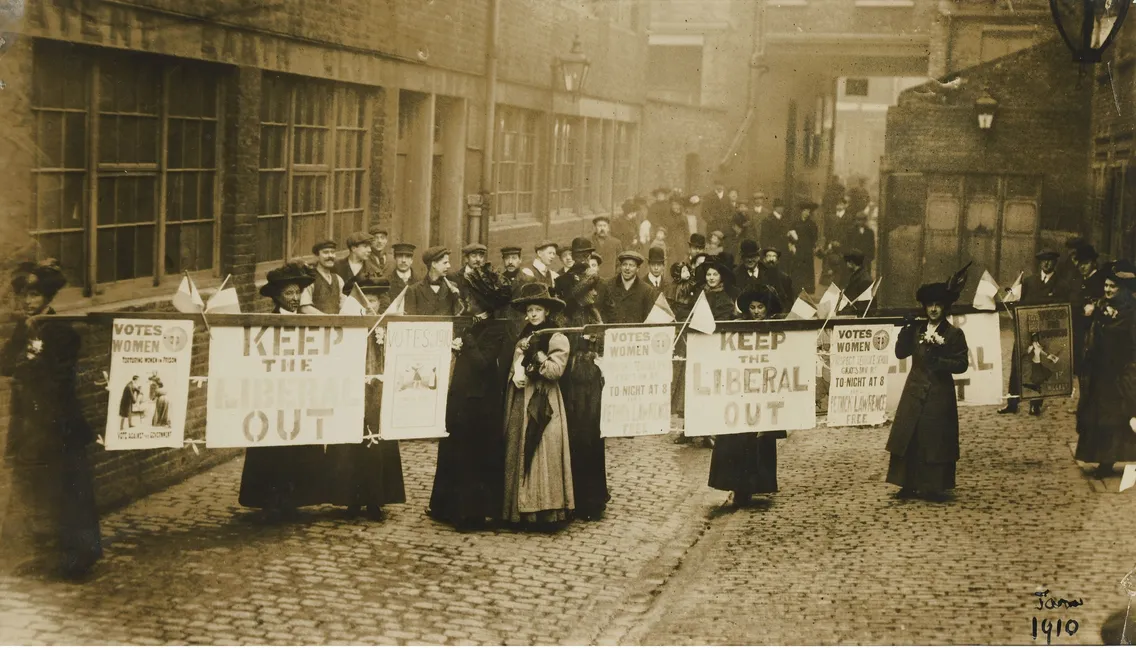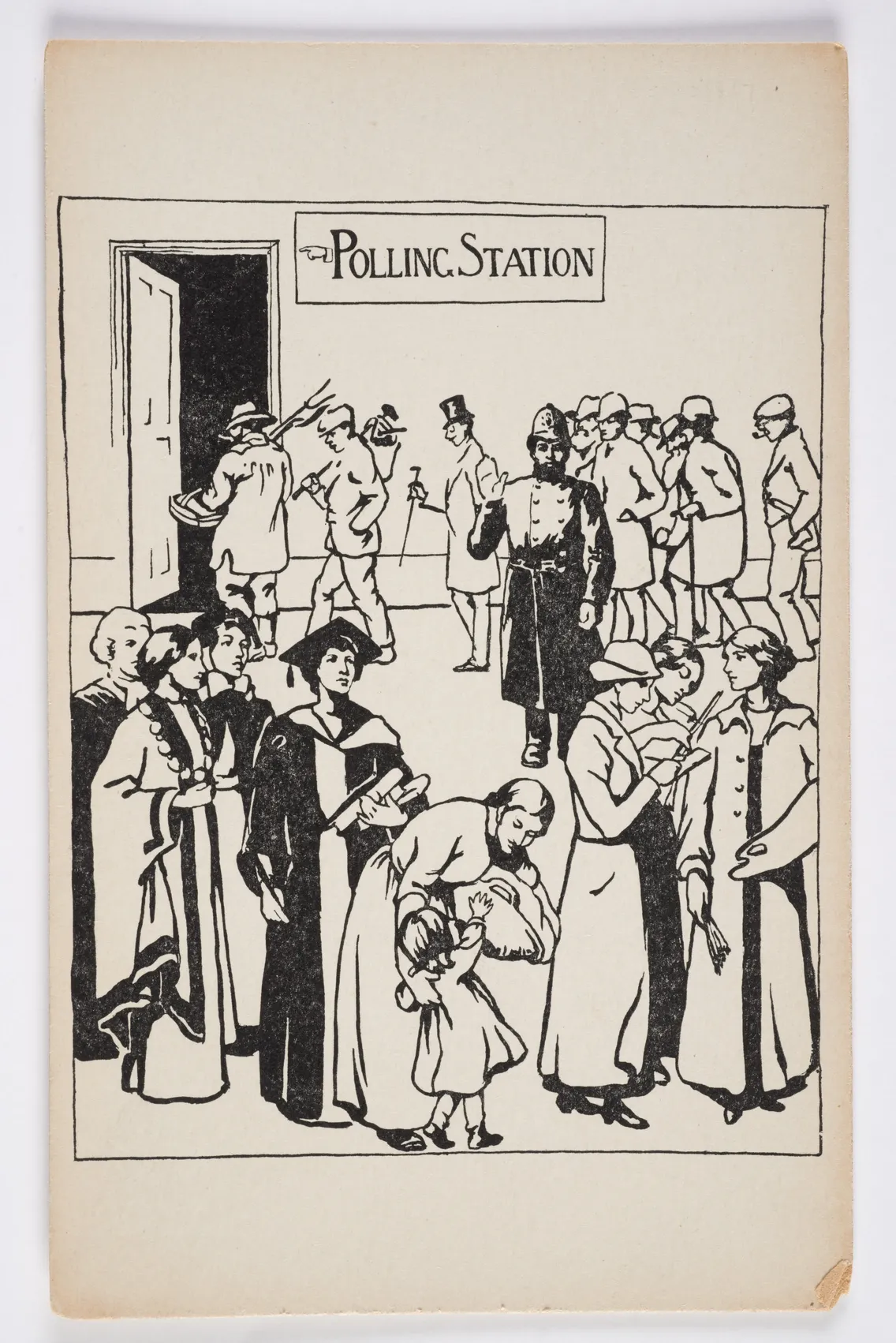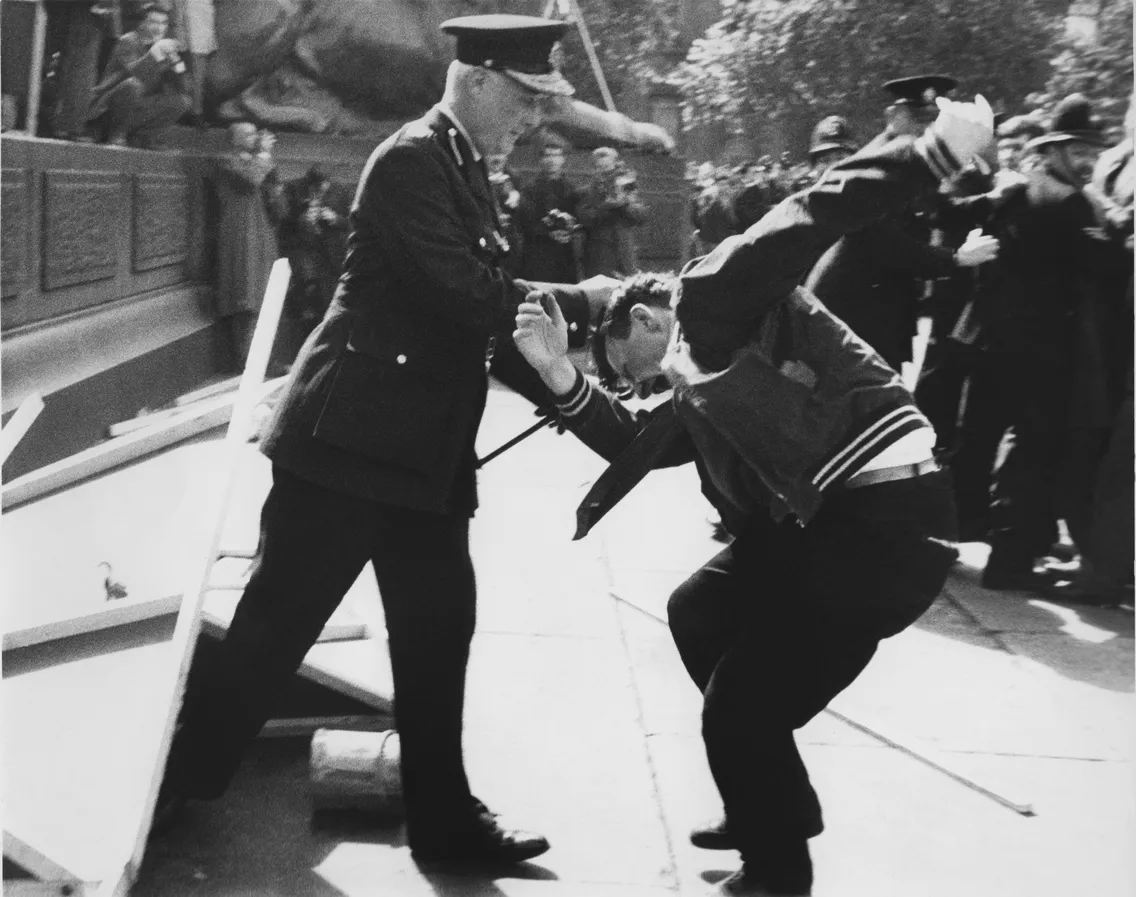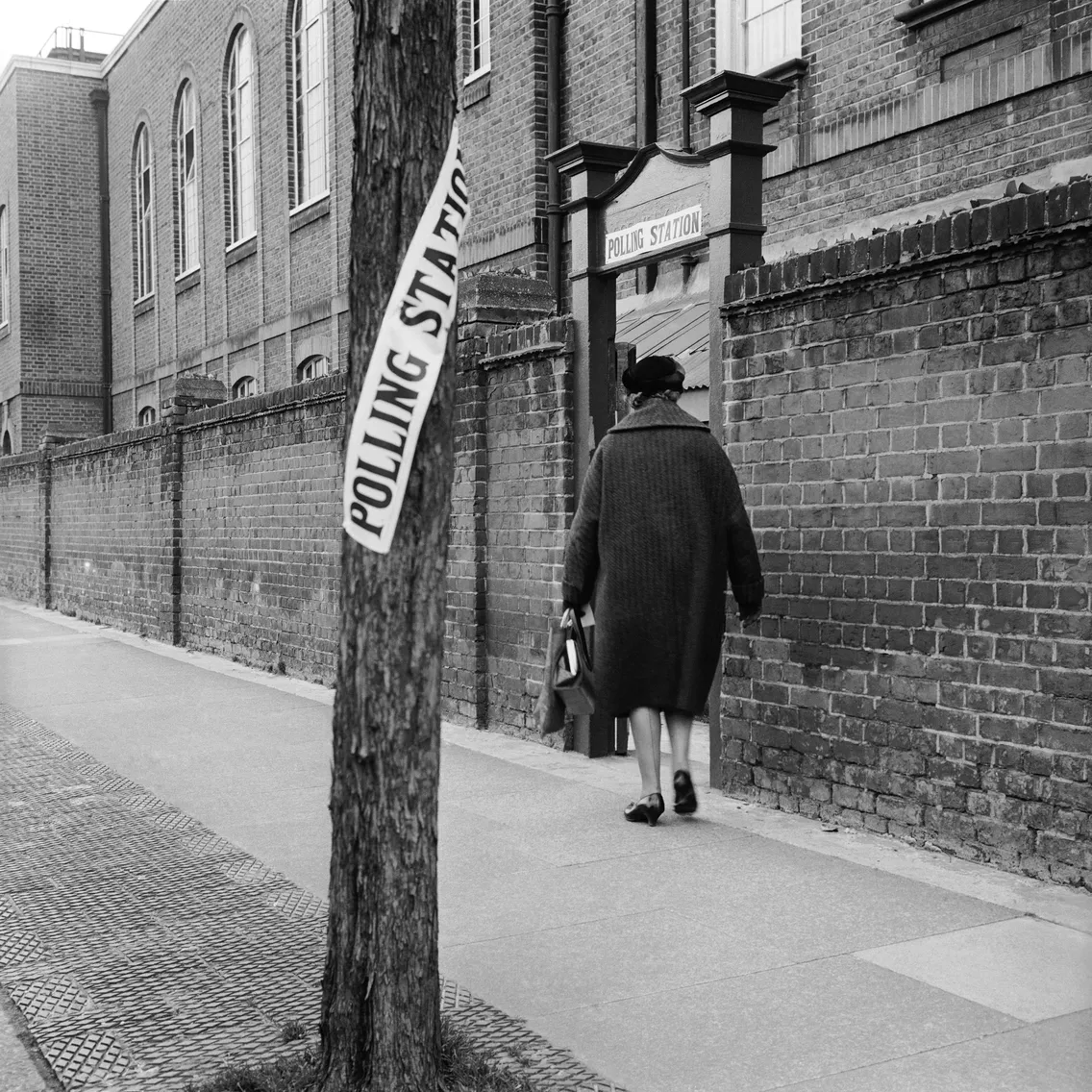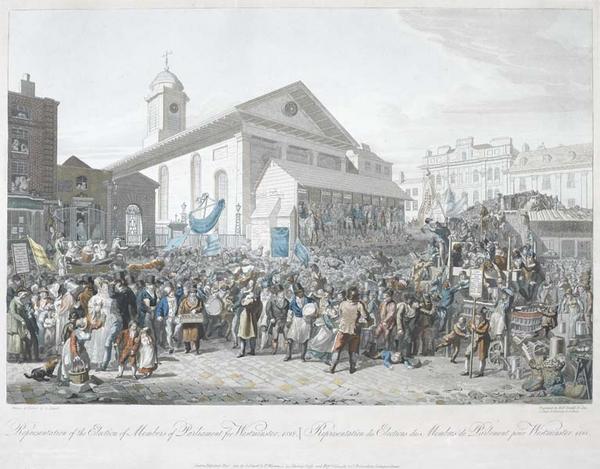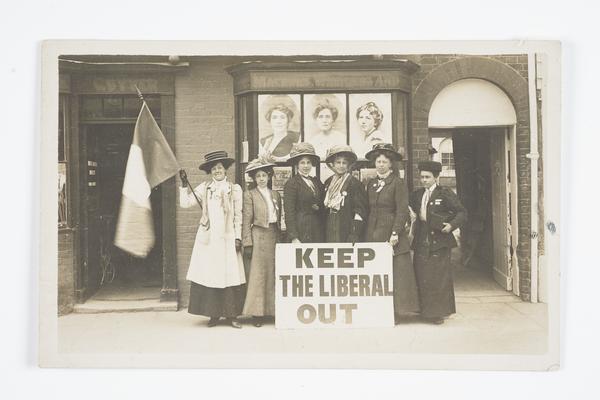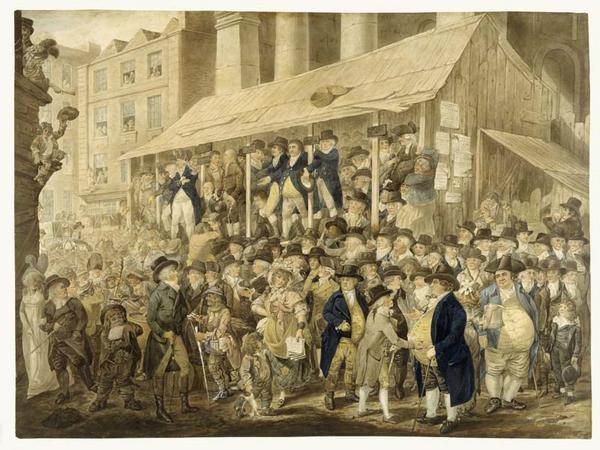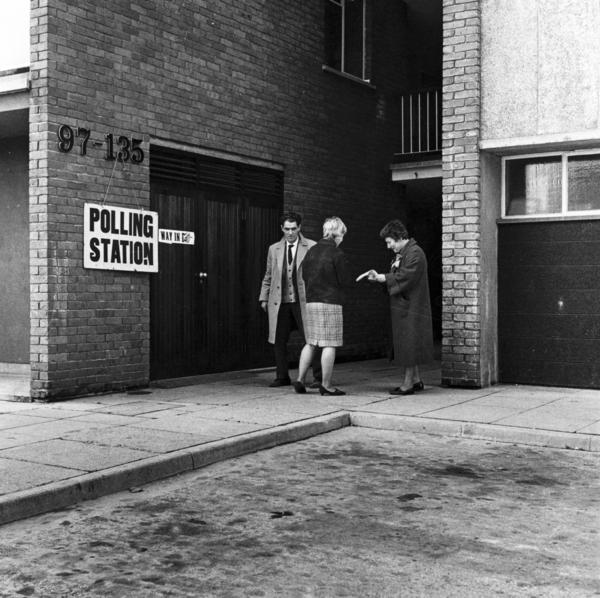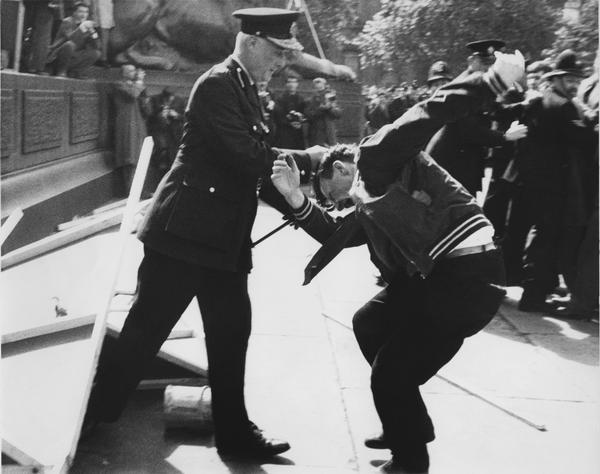London on election day
Look back at London on election days through history, with the help of paintings and photographs from our collection.
Since 1788
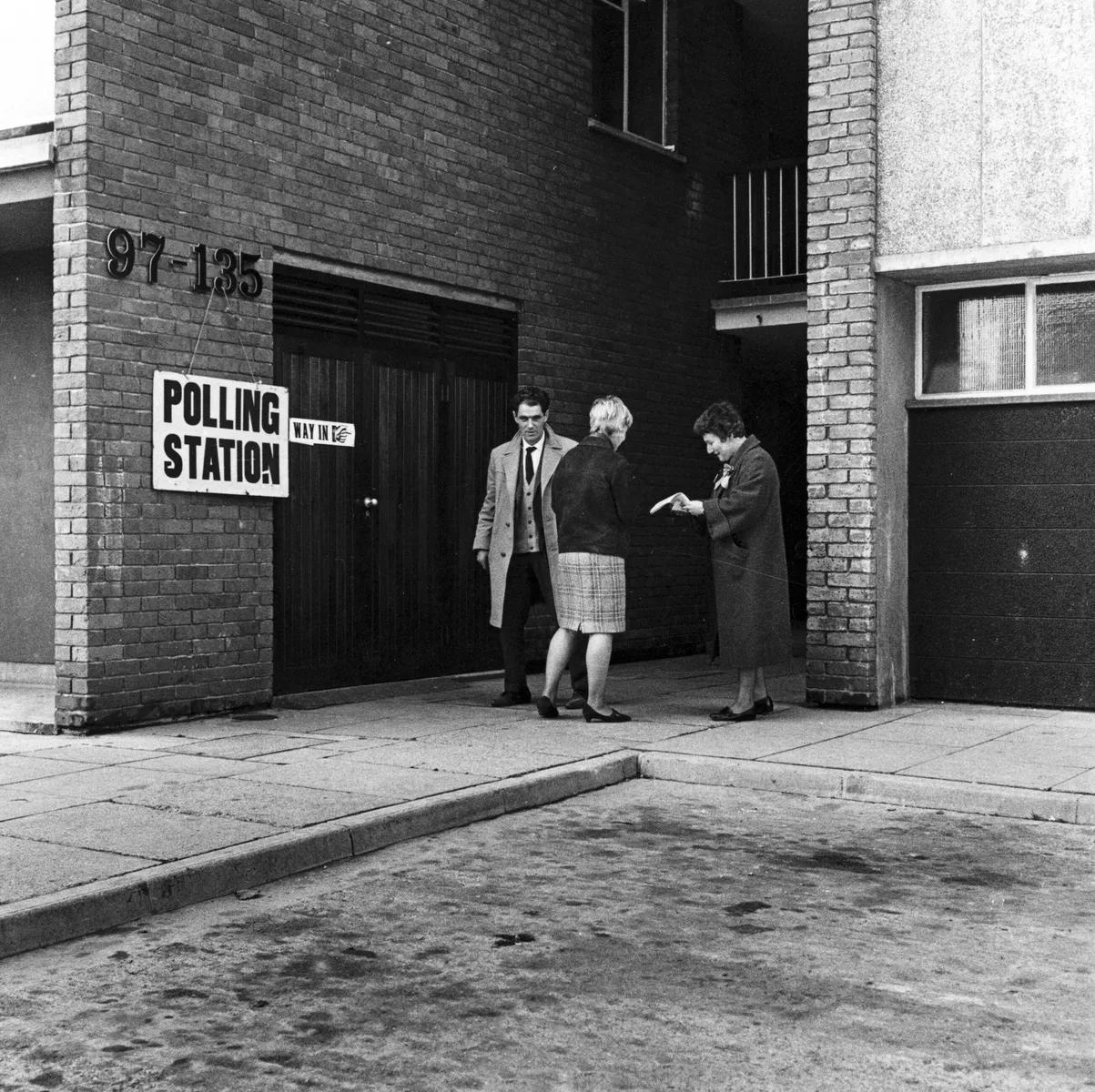
Every vote counts
If you’re voting any time soon, take a moment before you mark your X in the box to ponder how election day might have looked 250 years ago.
Anonymous voting only started in 1872. The first parliamentary election where some women could vote was in 1918. Election day in London once drew raucous crowds. Now Londoners bring their IDs and form a polite queue.
Chaos in Covent Garden, 1788
This pen and watercolour drawing by Richard Dighton captures the chaos of an election in 18th-century London.
At this time, only a small class of property-owning men voted to select Members of Parliament. There was no secret ballot – all voters declared their choice publicly.
Campaigners could easily bribe or threaten voters, with wealthy politicians handing out free food and drink to win votes.
Dighton’s drawing shows Lord John Townshend, who campaigned for election in Covent Garden. Beside him is the Duchess of Devonshire, a famous London noblewoman involved in political campaigning. The future King George IV rides in the carriage.
Celebrating the polls in prison, 1806
Matthew Dubourg’s watercolour shows celebrations on the night of the 1806 election in an unusual location: the courtyard of King’s Bench Prison, just off Borough High Street.
This was a debtor’s prison, where inmates were imprisoned because they failed to repay loans.
Debtors’ prisons allowed wealthy inmates to live comfortably. Here, well-dressed men and women are enjoying an outdoor concert celebrating the election of Thomas Turton as the MP for Southwark. The banner at the top of the painting reads “Turton Forever”.
Election of the members for Westminster, 1818
This etching shows a crowd outside St Paul’s Church, Covent Garden for the general election of 1818. Forty years after Dighton's view of a drunken scrum, this shows a slightly more orderly election.
The candidates can be seen toward the back of the image, on the temporary wooden structure built against the church.
The main focus is on the crowd, where children, men and women of many ethnicities wave banners, argue, eat and cheer. For many Londoners, election day was more about the carnival atmosphere than the politics.
One banner being waved reads “Universal Suffrage” – at this time, an appeal for all men to have the vote. The candidate Hunt was the radical Henry “Orator” Hunt, who proposed annual parliaments, universal suffrage and a secret ballot.
The political goals of radicals like Hunt moved us towards the voting system we enjoy today.
Keeping the Liberals out, 1910
This photograph shows Suffragettes campaigning in south St Pancras during the general election in early 1910. Women weren’t allowed to vote in parliamentary elections, but the Suffragette movement pressured the government to change the law.
This included encouraging male voters to keep Liberal candidates out of parliament. Under Herbert Asquith the Liberals suppressed the militant votes for women movement with increasing violence from 1903.
The Suffragette postcard shows a polling station on Election Day in 1912. Women are stopped from voting by a policeman, while male agricultural labourers and aristocrats head inside.
Anti-fascist protests in Trafalgar Square, 1960
These pictures by photographer Bob Collins were taken at a "Mosley riot" in Trafalgar Square, where police fought with supporters of, and protesters against, the British fascist politician Sir Oswald Mosley.
Mosley was held in prison during the Second World War for his pro-Nazi views. During the 1959 general election, he stood as a candidate in Kensington North, a constituency that had recently experienced the 1958 Notting Hill race riots.
Mosley proposed a ban on mixed-race marriages and the deportation of immigrants. He received 8.1% of the vote.
Polling station views, 1959 and 1964
From the early 1950s through to the 1980s, Henry Grant documented the everyday experiences of Londoners. He was a freelance photographer by trade, but between assignments he would take pictures of the people of London.
Here he captures the far gentler experience of voting around the end of the 1950s. The 1964 general election was a closely fought contest which ended 13 years of Conservative Party rule, replacing it with Harold Wilson's Labour government.
Edited version of a blog by Alwyn Collinson, Digital Editor.

